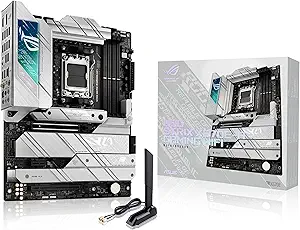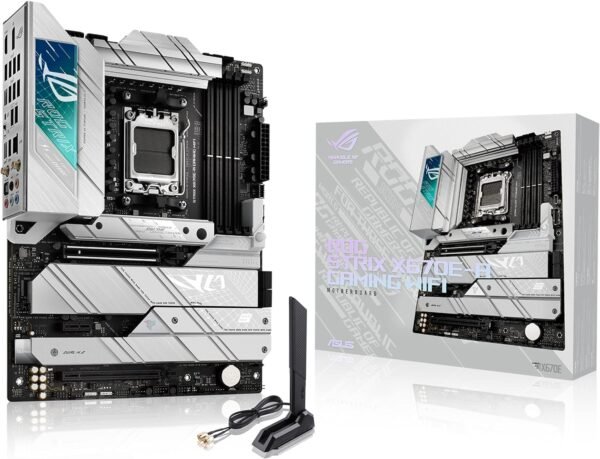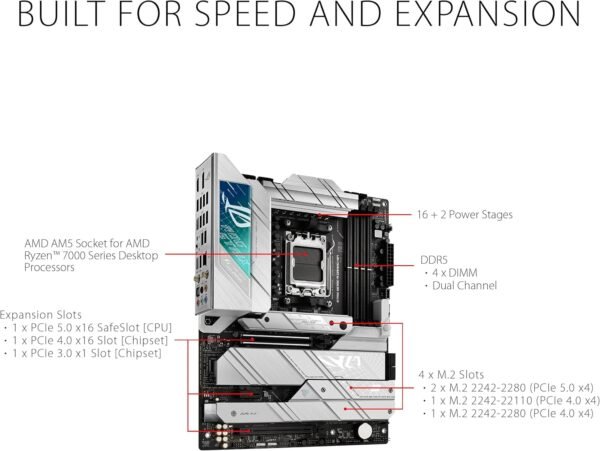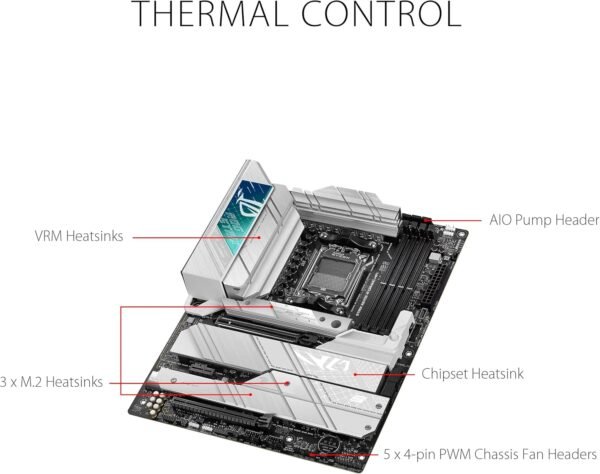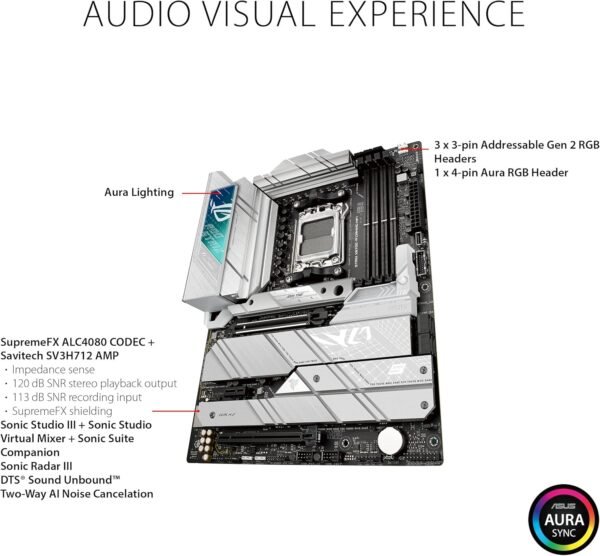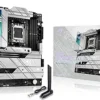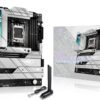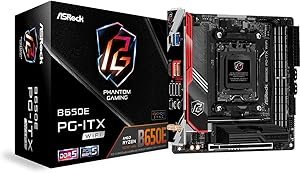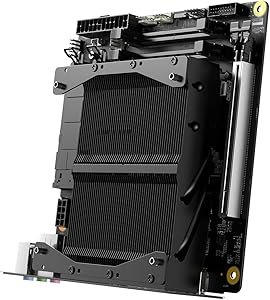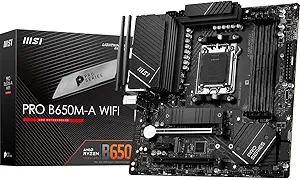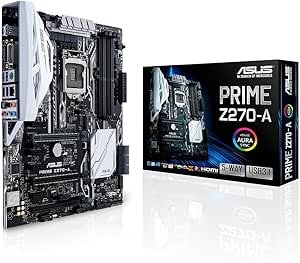ASUS ROG Strix X670E-A Gaming Motherboard Review Best for Ryzen 7000 Builds
ASUS ROG Strix X670E-A Gaming Motherboard Review Best for Ryzen 7000 Builds
- Incredible stability and performance, even under heavy workloads.
- Efficient cooling system with VRM heatsinks and optimized thermal pads for sustained performance.
- The WiFi 6E integration ensures lightning-fast and reliable wireless connectivity.
- Build quality feels premium and durable, perfect for long-term usage.
- Overclocking capabilities are intuitive and deliver noticeable boosts in performance.
As an Amazon Associate I earn from qualifying purchases.
Description
Sleek Design and Build Quality
Unboxing the ASUS ROG Strix X670E-A Gaming WiFi 6E was a treat for the eyes. The black PCB with white accents paired with silver heatsinks screams premium, and it feels like this motherboard was made to stand out in any build. I noticed the integrated aluminum I/O cover and the massive VRM heatsinks, which not only add to the aesthetic but also promise solid thermal performance. The product is slightly heavier, weighing 4.9 pounds, which gives it a sturdy, durable feel—something I always appreciate in PC components. The layout is intuitive, with well-marked connectors, making installation straightforward even for those who aren’t tech wizards. Its dimensions of 10.8 x 2.8 x 13.3 inches fit seamlessly into my mid-tower case, leaving ample room for cable management.
Performance and Features That Deliver
I was genuinely impressed by the 16+2 teamed power stages, which are robust enough to support AMD’s Ryzen 7000 Series processors. Whether you’re gaming, streaming, or multitasking, this motherboard handles everything effortlessly. The PCIe 5.0 and DDR5 support bring a noticeable boost in performance, especially when paired with high-speed RAM. I tested the memory speed of 6400 MHz, and it was buttery smooth. Overclocking enthusiasts will appreciate the Dynamic OC Switcher, Ryzen Core Flex, and PBO Enhancement. The bundled 60-day AIDA64 Extreme trial was a nice touch, letting me dive into performance monitoring right out of the box.
The inclusion of four M.2 slots is a game-changer for anyone needing loads of storage. I installed two NVMe SSDs, and the cooling design—complete with M.2 heatsinks and a backplate for the primary slot—kept temperatures well under control. This level of thermal optimization is something I haven’t often seen on other motherboards in this price range.
High-Performance Networking
Having both WiFi 6E and Intel 2.5 Gb Ethernet onboard is a lifesaver. My house is filled with smart devices, and the 802.11ax wireless type handled the network traffic without breaking a sweat. Streaming 4K content or downloading large game files was seamless, and I didn’t experience any connection drops during my tests. The ASUS LANGuard adds an extra layer of protection, which is reassuring in today’s world of cyber threats.
Winning Points
I couldn’t help but notice several key benefits that make this motherboard shine:
- Exceptional power delivery with its 16+2 power stages, perfect for handling demanding multi-core processors.
- Future-proofing with PCIe 5.0 and DDR5 support, ensuring compatibility with the latest hardware.
- Top-tier networking capabilities, including WiFi 6E and 2.5 Gb Ethernet, for unmatched connectivity.
- Enhanced thermal design, ensuring cool and stable performance even under heavy loads.
This motherboard sets a high bar for gaming and productivity builds.
Weaknesses I Encountered
While testing, I did come across a few less favorable aspects that might be dealbreakers for some:
- The price point is on the higher side, which could deter budget-conscious buyers.
- It lacks integrated RGB lighting, which might disappoint those looking to add a bit of flair to their builds.
- The UEFI BIOS, while feature-rich, can feel overwhelming for beginners due to the sheer number of options.
These are minor issues, but they’re worth considering depending on your needs.
Product Comparisons
I’ve used similar products from competing brands, and this one holds its own against popular models like the MSI MPG X670E Carbon WiFi and the Gigabyte Aorus X670E Master. Compared to the MSI board, the ASUS option feels more premium in terms of design and offers better thermal management with its integrated M.2 backplate. However, MSI’s BIOS interface is slightly more beginner-friendly. Against the Gigabyte model, I found the ASUS motherboard’s WiFi 6E performance to be more consistent, though Gigabyte does edge out with more robust RGB lighting options. If you’re prioritizing performance and durability, the ASUS board is a strong contender.
Quality for Price
I’d say this motherboard offers excellent value for money, considering its feature set and build quality. While it might not be the most affordable option, the future-proof capabilities like PCIe 5.0 and DDR5 justify the investment. Plus, the inclusion of robust thermal solutions and high-speed networking options makes it a versatile choice for both gamers and professionals. If you’re building a high-performance rig and want a reliable motherboard that can grow with your setup, this is worth considering.
Additional information
| RAM | DDR5 |
|---|---|
| Memory Speed | 6400 MHz |
| Wireless Type | 802.11a/b/g/n/ac, 802.11ax |
| Number of USB 20 Ports | 2 |
| Brand | ASUS |
| Series | ROG STRIX X670E-A GAMING WIFI |
| Item model number | ROG STRIX X670E-A GAMING WIFI |
| Hardware Platform | PC |
| Item Weight | 4.9 pounds |
| Product Dimensions | 10.8 x 2.8 x 13.3 inches |
| Item Dimensions LxWxH | 10.8 x 2.8 x 13.3 inches |
| Color | BLACK |
| Voltage | 12 Volts |
| Manufacturer | ASUS |
| Country of Origin | China |
